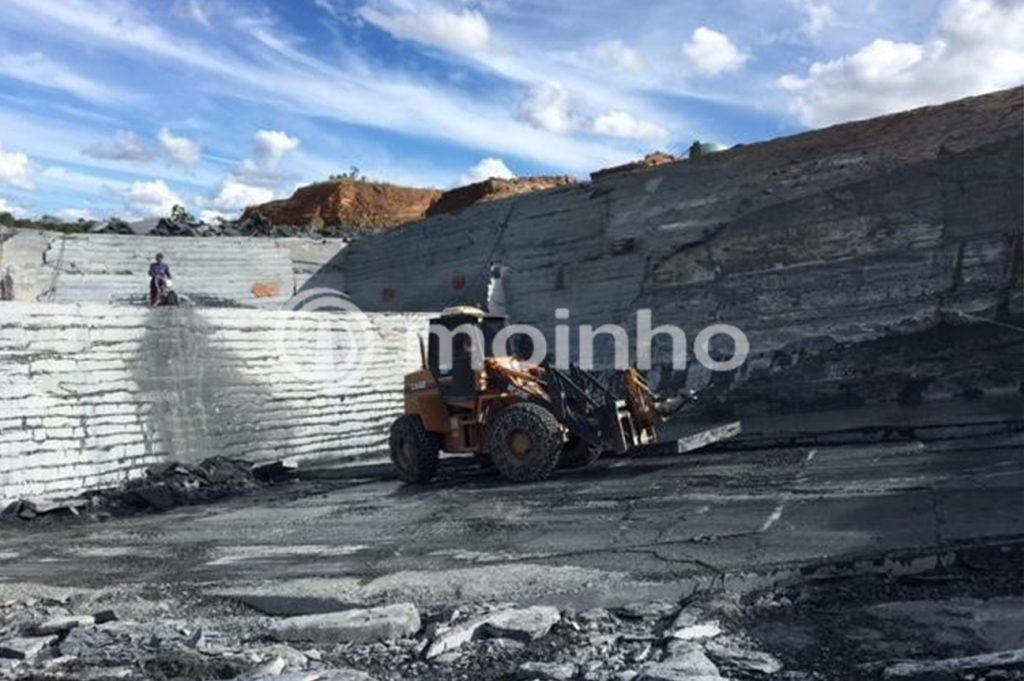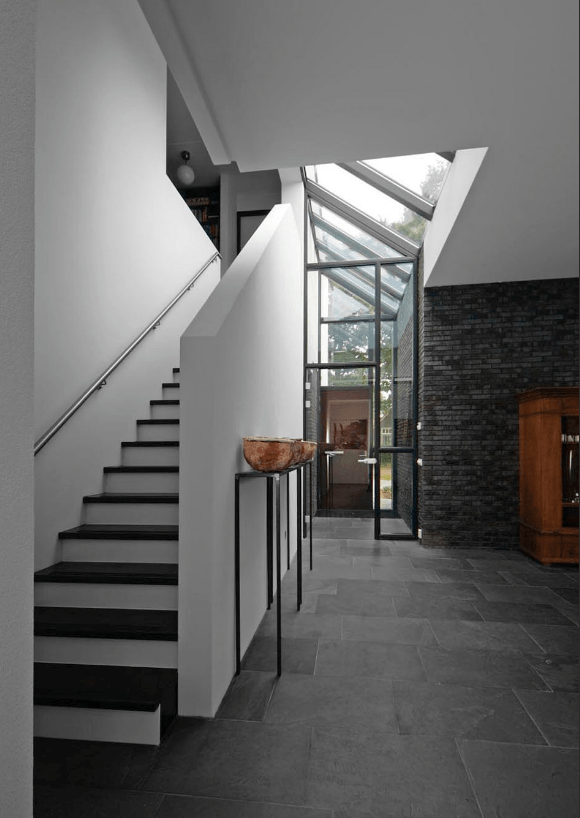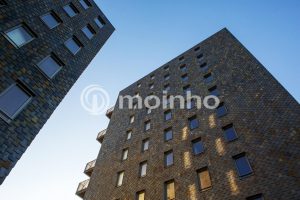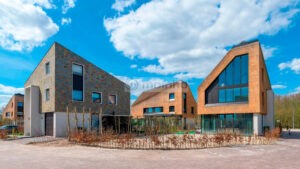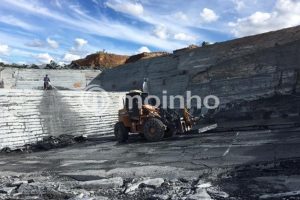In a world where human impact on nature creates pollution and destruction of fauna and flora, we must and will change our construction habits to be sustainable. Instead of polluting we should all have a sustainable and positive impact on our planet. In short, using our slate as a building material is part of the solution for this new way of ecological building, because of the natural material and its characteristics, production method and the stone’s lifecycle & re-usability. In this article each aspect of our slate and the impact on sustainability will be explained. Special of our slate is that it is part of the group of oldest materials in the world, it is even one of the oldest stones formed on our planet. Our slate is around 1 billion years old (1.000.000.000) formed in the Precambrian era.
Precambrian era
The Precambrian era is between 750 until 1000 million years ago, way before the first existence of dinosaurs or any other form of evolved life on planet Earth. To have a comparison: the dinosaurs emerged only 200 million years ago. Long before the dinosaur era, in the Precambrian era, the surface of earth was in development and only very primitive forms of life existed in the oceans and on the soil. The absence of shells, bones and other calcium components is the reason why our stone has one of the lowest calcium concentrations, so it is very well resistant against acids and UV-radiation. Also, the carbonate content of our stone is very low, this results in an even longer lifecycle of our material.
Quarry Extraction
The slate extraction area is about a thousand kilometers south (1000 kms) of the Amazon, in a plain known as Cerrado: grassland with low vegetation. Moinho itself manages the quarries in Brazil where the product is extracted and processed. As a result, we have full control over the entire process of extraction, processing and transportation. Our quarries are checked regularly according to the strict requirements of the Brazilian government agencies such as DNPM (raw material extraction) and IBAMA (nature and environment). As soon as a quarry is closed in the spacious grassland, there is an obligation to return the excavated earth layers back to fill the quarry – and within a few months a completely natural covered area will be created again.
Solar and Hydro power
In the factories we use electricity for the machines that calibrate, grind and saw. More than 80% of this is now generated by hydropower plants (hydro power). By installing solar panels (solar power) we supplement the rest of the energy requirement to more than 90% renewable energy sources. We expect to be able to produce 100% full green electricity within a few years.
Staff members
All our employees are over 21 years old, most of them are much older and have often been with us for several decades. All heavy tasks are mechanized, such as the pneumatic chisels at the front of the shovels that transport the blocks. Education, health care, pension accrual and a safe working environment are of highest standard and constantly being improved wherever possible. Together with our partners in the European Union, we are working on standards for sustainable natural stone extraction, such as with the German Xertifix members.
Shipping Sulphur
Our slate is transported by sea container ship from Brazil to New York, Rotterdam, and many other ports worldwide, with thousands of containers at the same time, making the impact of this transport movement comparable to a short trip within the Netherlands with a truck. As Moinho, we are since the start of the program in Santos harbor, member of the shipping group with Low-Sulphur vessel fuel. Sulphur in the fuel harms the environment and the new low-Sulphur fuel (nowadays mandatory following IMO) is a big step in making transport by sea the most efficient and cleanest way to transport goods. A container ship consumes fuel, there are initiatives to make this kind of fuel eco-friendlier and more sustainable (such as GoodFuel). As soon as these programs start in Brazil, Moinho will participate in this next step in sustainability in sea transport.
Use of heat and chemicals
Our stone is cut by diamond blades in the quarry, split by hand and chisel, sawn and calibrated. The surface and stone are completely natural. No heat or pressure is used for its creation, it is already formed in nature. The surface receives no treatment at all, it is split with its natural surface from 1 billion years ago and ready for application on roofs or flooring. We never use any form of a chemical product to treat our product during production, all is sawn and packed as it comes naturally.
Water treatment
For cooling of the diamond blades and transporting the sawn stone dust we use water which we recycle in decanter basins. The stone powder itself is re-used locally for agriculture or road construction. Our region is known for heavy rain-falls and all other water deposits are regularly filled with rain water for use inside quarry and production. The absence of any chemical substance keeps the water in good state and the forests around us absorbs any excess water.
Packing
When it comes to packaging, we look for the most sustainable and circular solutions. All the wood we use for our strong crates is durable, fast-growing wood of the Elliot Pine and Eucalyptus variety, the thin tall trunks which are planted next to the quarry. These trees grow from plant to tall tree in 7 years. Our wish is to package completely without plastic but sometimes we use plastic foil made from recycled plastic for the cover by necessity and when biodegradable variants become available, we switch to these as well.
Life time use
Our stone has one of the highest resistances against UV-radiation, acids, smog, surface-scratches and is tested for generations of long use for flooring, terraces and roofs. The life time of our product is immense. Even on intensely used flooring such as railway terminals and schools, after many years our slate will keep the same appearance and remains strong and durable.
Recycling reclaimed materials
The fixing of our roofing slate is made with nails and stainless-steel screws. The construction of the battens is made with wood. If a building with our roofing will be demolished after decades of serving its purpose, our slate can be taken away and be used as reclaimed material on new buildings. It will be almost invisible to see any signs of wear or marks of weather influence. With its extremely low calcium and carbon content, the same slate will be used for other roofs and have another life-cycle on a newer building. Recycling of reclaimed materials, it is common practice in slate, one of the advantages of this natural material.
Lowest carbon impact
Following the Inventory of Carbon and Energy (University of Bath, 2006), our natural product Moinho Slate has an embodied energy of between 0,1 and 1,0 MJ/kg which is up to 50 times less than a clay tile. The embodied Carbon for slate is measured in KGCO2/kg and is between 0,005 and 0,054 kgco2/kg. This is much lower than any concrete tile (0,19 kgco2/kg) or any clay tile (0,43 kgco2/kg). Slate has a ten-times or even a 50x better score than other (industrialized) products. Reasons for these very good scores are of course the nature of our slate product. Slate is only taken from the quarry, not industrialized with heat, pressure, chemicals or resins, so the carbon and energy impact are extremely low compared to other man-made building products.
Ecology
Ecology is the use of natural resources like our slate, carefully taken from the quarry, sawn with renewable energy, packed with renewable wood, transported with environment friendly shipping fuel. With a generations-long life span and even the possibility for re-using the slate beginning a new life-cycle on a new building our slate is the right answer for building eco-friendly.

